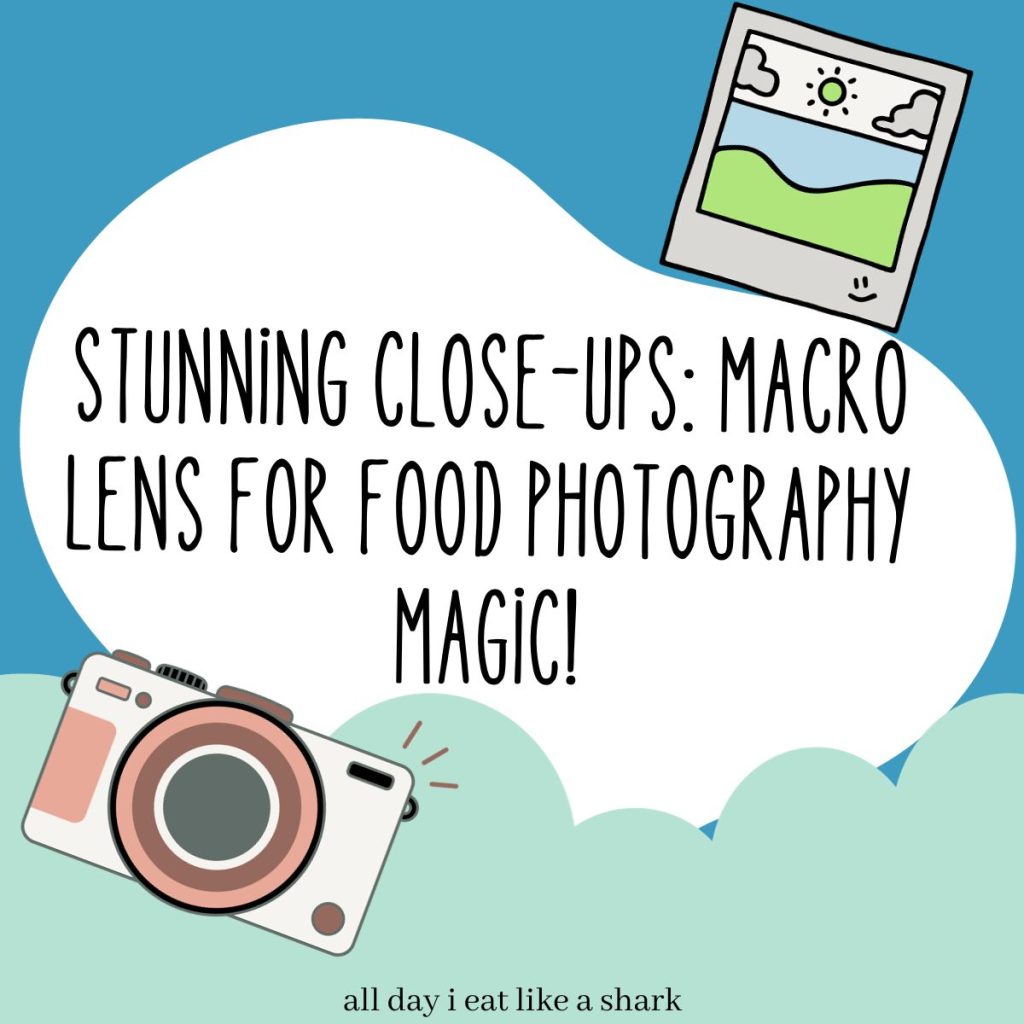If you’re passionate about food photography and want to make your images truly stand out, using a macro lens is a fantastic way to achieve that. This tool is a game-changer for those who love to explore the intricate details and hidden beauty of their culinary creations.
A macro lens is like a window into a whole new world, allowing you to capture the textures and nuances that make your dishes so visually appealing, almost inviting viewers to taste them through the screen.
In this article, we’ll walk you through why a macro lens is essential for food photography and share some practical tips and tricks to help you make the most of this exciting and creative photography technique.
The Advantages of Using a Macro Lens for Food Photography
You’ll love the advantages of using a macro lens for food photography.
With a macro lens, you can capture the smallest details of your food, bringing out its texture and making it look even more appetizing.
The lens allows you to get up close and personal with your subject, highlighting the intricate patterns and colors that may go unnoticed with a regular lens.
This innovation in photography allows you to create stunning images that will captivate your audience and make them crave the food you’re showcasing.
The macro lens also gives you the flexibility to experiment with different angles and perspectives, adding depth and creativity to your compositions.
Capturing Intricate Details With a Macro Lens
Get ready to dive into the close-up world of photography with a macro lens, capturing all the intricate details you’ve never noticed before.
With this innovative tool, you can explore a whole new dimension of photography and unlock the hidden beauty in everyday objects.
From the delicate texture of a flower petal to the minute patterns on a butterfly’s wing, a macro lens allows you to capture the smallest details with stunning clarity.
Imagine the possibilities in food photography, where you can showcase the intricate textures of fruits, vegetables, and desserts. Every sprinkle of sugar, every droplet of sauce will come to life in your images.
This level of detail adds a sense of sophistication and artistry to your images, making them visually captivating and appealing to your audience.

Tips and Tricks for Using a Macro Lens in Food Photography
To master the art of close-up food photography, consider the following tips:
1. Explore Various Angles and Perspectives
Experiment with multiple angles and perspectives to yield images that are visually impactful and rich in detail. Different viewpoints can offer fresh, intriguing representations of your subject, highlighting the distinct elements that make each dish special.
Try shooting from above to showcase the different layers or get down to eye level for a more intimate perspective.
Discover the sweet spot where the composition, angle, and lighting converge to reveal the essence of your culinary masterpiece.
2. Manipulate Depth of Field
Experimenting with shallow depth of field can help in accentuating specific elements of your dish, crafting a sense of depth, dimension, and focus.
By adjusting the aperture, you can emphasize textures and details, allowing the viewers to almost taste the food with their eyes, and making the subject more appealing and vivid.
3. Push the Boundaries of Creativity
Don’t constrain yourself to the conventional norms of food photography. Venture beyond the traditional and explore unconventional compositions, lighting, and styling.
Use the macro lens as an instrument of innovation, delving into the intricate details and unique characteristics that define each dish. Break the mold and redefine what food photography can be by exploring new ideas and techniques.
4. Leverage the Power of Macro Lens
A macro lens can be a powerful ally in elevating your food photography. Its ability to capture minute details and textures can unveil the unseen beauty of your culinary creations, imbuing your photos with a sense of realism and allure.
By mastering macro lens techniques, you can produce images that are not only aesthetically pleasing but also tell a story, encapsulating the essence and soul of every dish.



Konnichiwa! (Hello!) I'm Pat Tokuyama, a Japanese tofu cookbook author, who travels for music, food, and adventure. If you like Japanese tea, checkout some of the newestorganic japanese tea, matcha bowls and noren and more!
** Curious about the Plant Based Japanese Cooking Club? ** Learn more here!
5. Pay Attention to Detail
Macro lenses reveal the finer points of your subject, so pay meticulous attention to detail. Every crumb, bubble, and speck can be visible, and while these details can add to the appeal, they can also detract from it if not managed properly.
Ensure every component in the frame is intentional and contributes to the overall aesthetic of the image.
Don’t be afraid to think outside the box and try new techniques. Innovation is the key to taking your food photography to the next level.





Konnichiwa! (Hello!) I'm Pat Tokuyama, a Japanese tofu cookbook author, who travels for music, food, and adventure. If you like Japanese tea, checkout some of the newestorganic japanese tea, matcha bowls and noren and more!
** Curious about the Plant Based Japanese Cooking Club? ** Learn more here!